# Features of Mini Program Plug-Ins
Plug-ins are functional components that can be added to and directly used in Mini Programs. Developers can develop plug-ins in the same way as developing Mini Programs and use the plug-ins for other Mini Programs. In addition, developers can use plug-ins within Mini Programs to provide users with more diversified services, without having to develop additional plug-ins.
To develop plug-ins, read Developing a Plug-In. To use plug-ins, read Using a Plug-In.
# Developing a Plug-In
# Applicable Scope and Service Categories
Applicable scope: Mini Programs owned by companies, media, governments, and other organization entities
Developers can select one of selected categories for the current Mini Program account as the service category of the plug-in. The following table lists existing available plug-in service categories. More categories will be available subsequently.
| Primary Category | Secondary Category | Notes |
|---|---|---|
| Express delivery and postal services | All secondary categories | |
| Education | All secondary categories | |
| Medical & Health care | Medical services and Internet hospital | Available only for medical and health care Mini Programs |
| Government and civil affairs | All secondary categories | |
| Finance | Credit reporting and insurance | |
| Travel and transportation | All secondary categories | |
| Life services | Ticket services, living payment, and leisure & entertainment | |
| IT technology | All secondary categories | |
| Catering | Comment and recommendation, menu, queuing in restaurant, meal ordering platform, and takeout platform | |
| Tourism | All secondary categories | |
| Entertainment | Video, frequency modulation (FM), and radio | 1. When the code of plug-ins in this category is submitted for review for the first time, the code needs to be approved by local Internet authority, which takes approximately seven days. 2. Video plug-ins are available only for Mini Programs owned by non-individuals. |
| Entertainment | Music, audio book, and motion comic | |
| Tool | Bookkeeping, voting, calendar, weather, memo, office work, dictionary, calculation, quotation/price comparison, invoice inquiry, business management, appointment/registration, picture/audio/video, and information inquiry | |
| E-commerce platform | E-commerce platform | |
| Social networking | Note, FAQ, community or forum, and chat with strangers | 1. When the code of plug-ins in this category is submitted for review for the first time, the code needs to be approved by local Internet authority, which takes approximately seven days. 2. Plug-ins in this category are available only for Mini Programs in the social networking category. |
| Social networking | Livestreaming | 1. When the code of plug-ins in this category is submitted for review for the first time, the code needs to be approved by local Internet authority, which takes approximately seven days. 2. Livestreaming plug-ins are available only for Mini Programs in the e-commerce platform and education categories. |
| Commercial services | Recruitment/Job hunting | |
| Automobile | All secondary categories |
# Plug-In Development Access Process
The following content describes the plug-in development access process:
- Activate the Plug-In Feature
- Enter Development Information and Develop a Plug-In
- Complete Basic Information
- Submit for Review and Release
- Manage Application for Use of a Plug-In
# Activating the plug-in feature
Mini Program developers can activate the plug-in feature in the Mini Program admin console without registering a new account. The feature is enabled after basic information is completed.
To activate the plug-in feature, open the Mini Program admin console and choose Mini Program Plug-In.
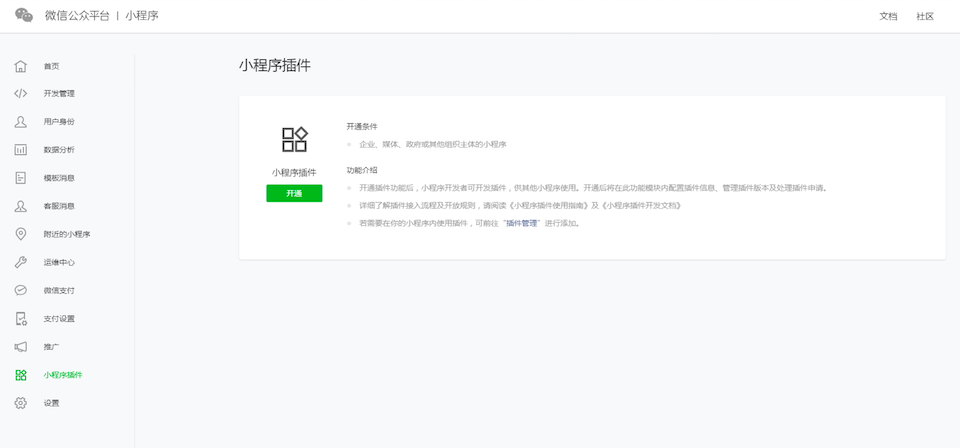
Enter basic information about the plug-in. This basic information will be displayed in the plug-in application process and on the basic information page of the Mini Program.
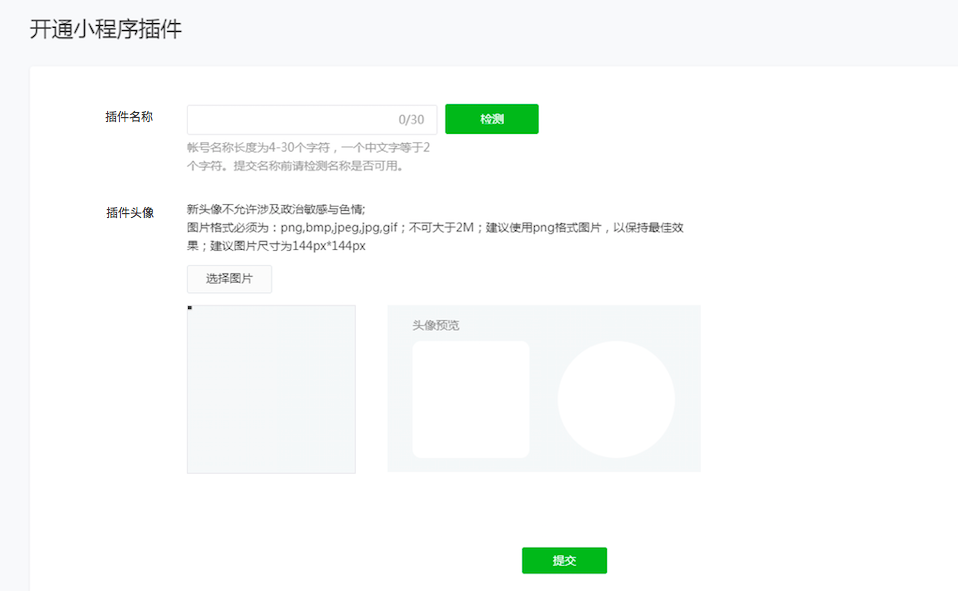
# Entering development information and developing a plug-in
You can develop a plug-in via Weixin DevTools after setting plug-in information such as a server domain name and token.
For more information about settings of Weixin DevTools, see the Plug-In Development Guide.
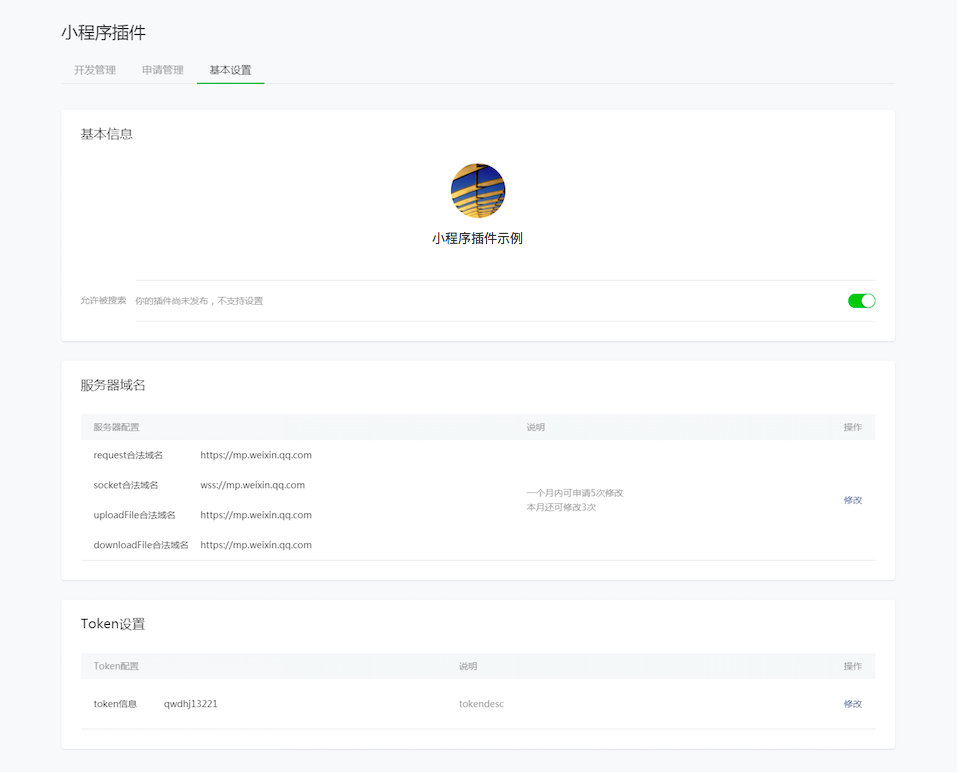
# Completing basic information
Before submitting a plug-in for review, ensure that the plug-in information such as the name, profile photo, and profile are specified and development documentation of the plug-in is uploaded to help developers access the plug-in.
# How to complete basic information
Log in to the Mini Program console and choose Mini Program Plug-In > Basic Settings. Ensure that the plug-in information such as the name, profile photo, profile, addition method, and customer service contact information is complete.
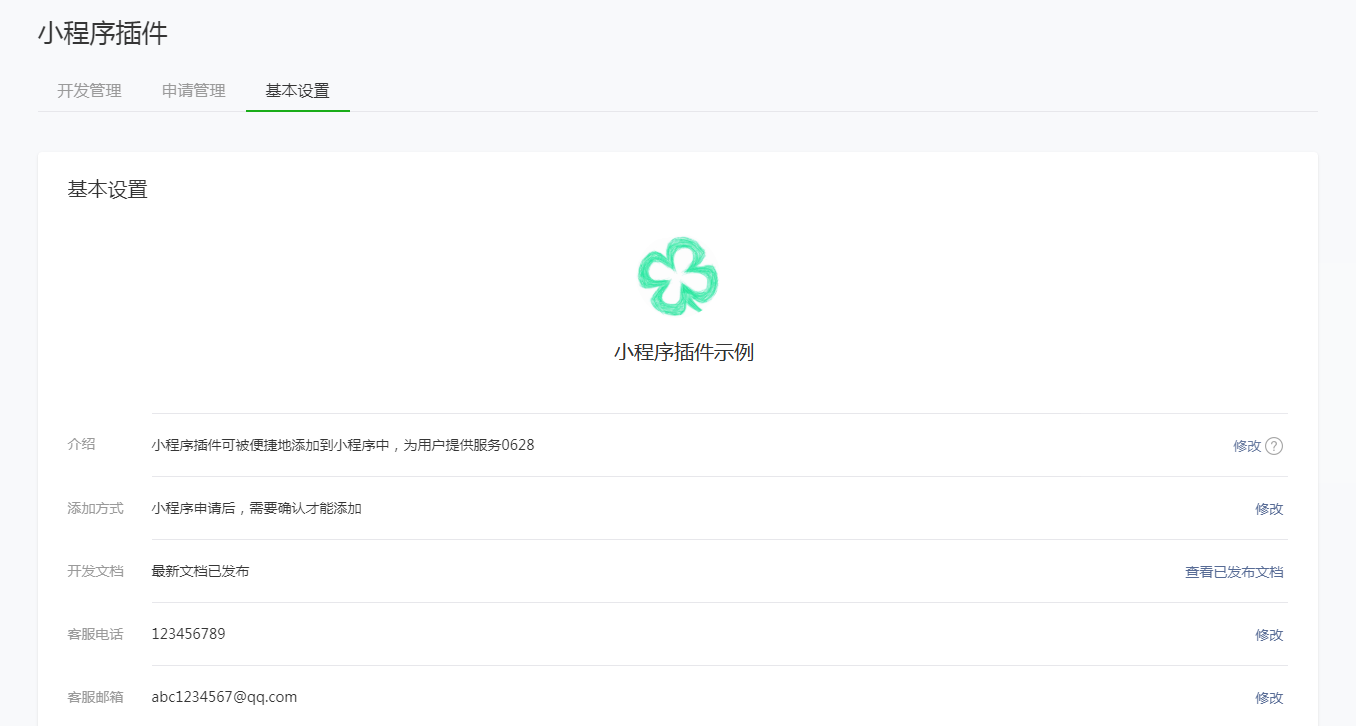
# Editing and uploading the plug-in development documentation
To allow Mini Program developers to quickly access plug-in services, plug-in developers can upload and release plug-in development documentation.
(1) Editing
In addition to plug-in code, a Mini Program developer can upload plug-in development documentation. This documentation must be stored in the doc directory in the root directory of the plug-in project. The directory is in the following structure:
doc
├── README.md // Plug-in documentation in Markdown format
└── picture.jpg // Other resource files. Only images are supported.
Referenced image resources cannot be network images and must be stored in this directory.
(2) Uploading
After README.md is edited, a Mini Program developer can use Weixin DevTools to preview the plug-in documentation and separately upload the plug-in documentation.
To upload the plug-in documentation, find the button on the lower right corner of the README.md file.
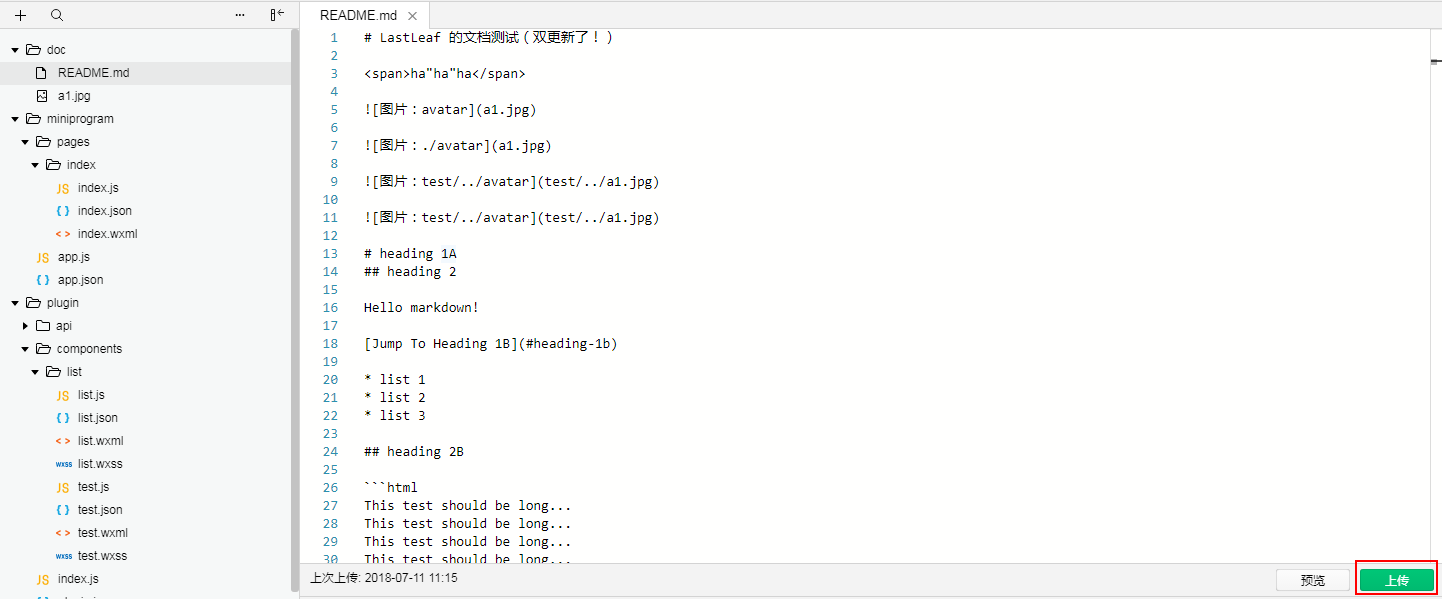
(3) Release
The plug-in documentation is not immediately released after being uploaded via Weixin DevTools. You can log in to the Plug-In Admin Console with your account name and password, and choose Mini Program Plug-In > Basic Settings to preview and release plug-in documentation.
The plug-in documentation can be repeatedly modified after release.
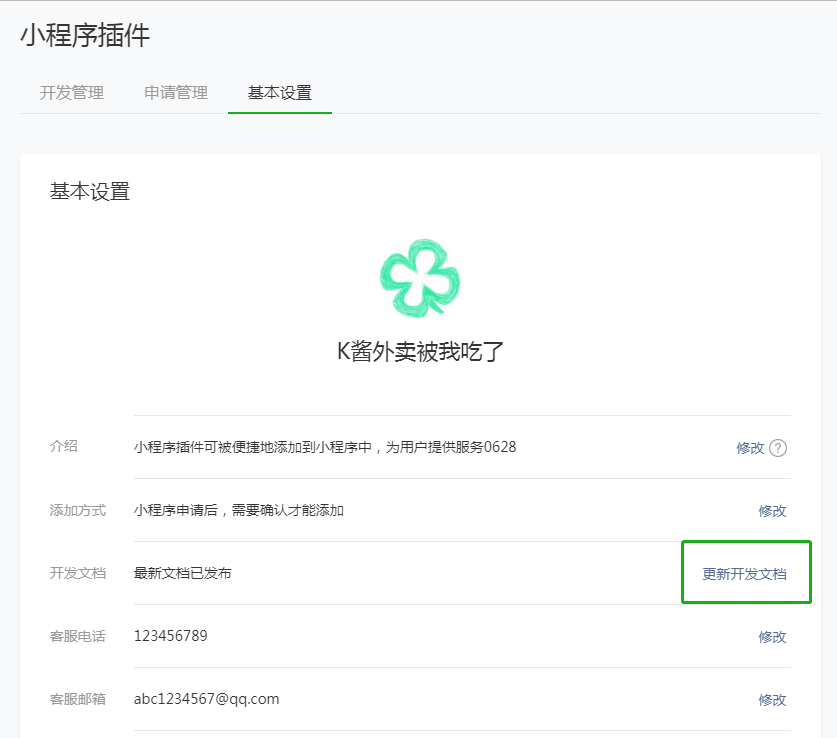
# Managing plug-in versions
Developers can upload code via Weixin DevTools and develop and debug plug-ins via the Mini Program Plug-In Development Assistant. Note that plug-ins are unavailable in the test version.
After uploading code via Weixin DevTools, a developer can open the Mini Program admin console and choose Mini Program Plug-In > Development Management to manage plug-in versions.
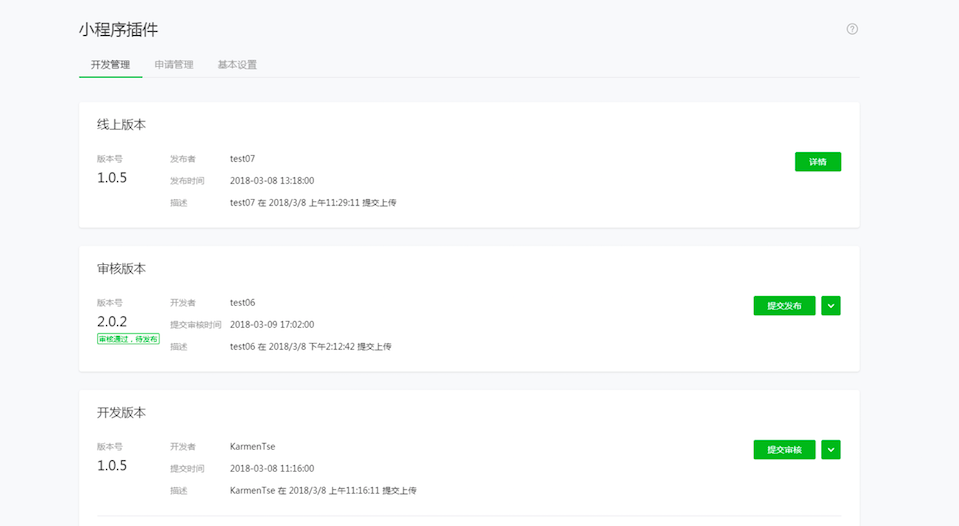
A plug-in must be submitted to the Weixin Mini Program team for review and can be released only after approval is obtained.
Before submission, a plug-in developer must enter the following information: the plug-in service category, tags, preview, and feature description.
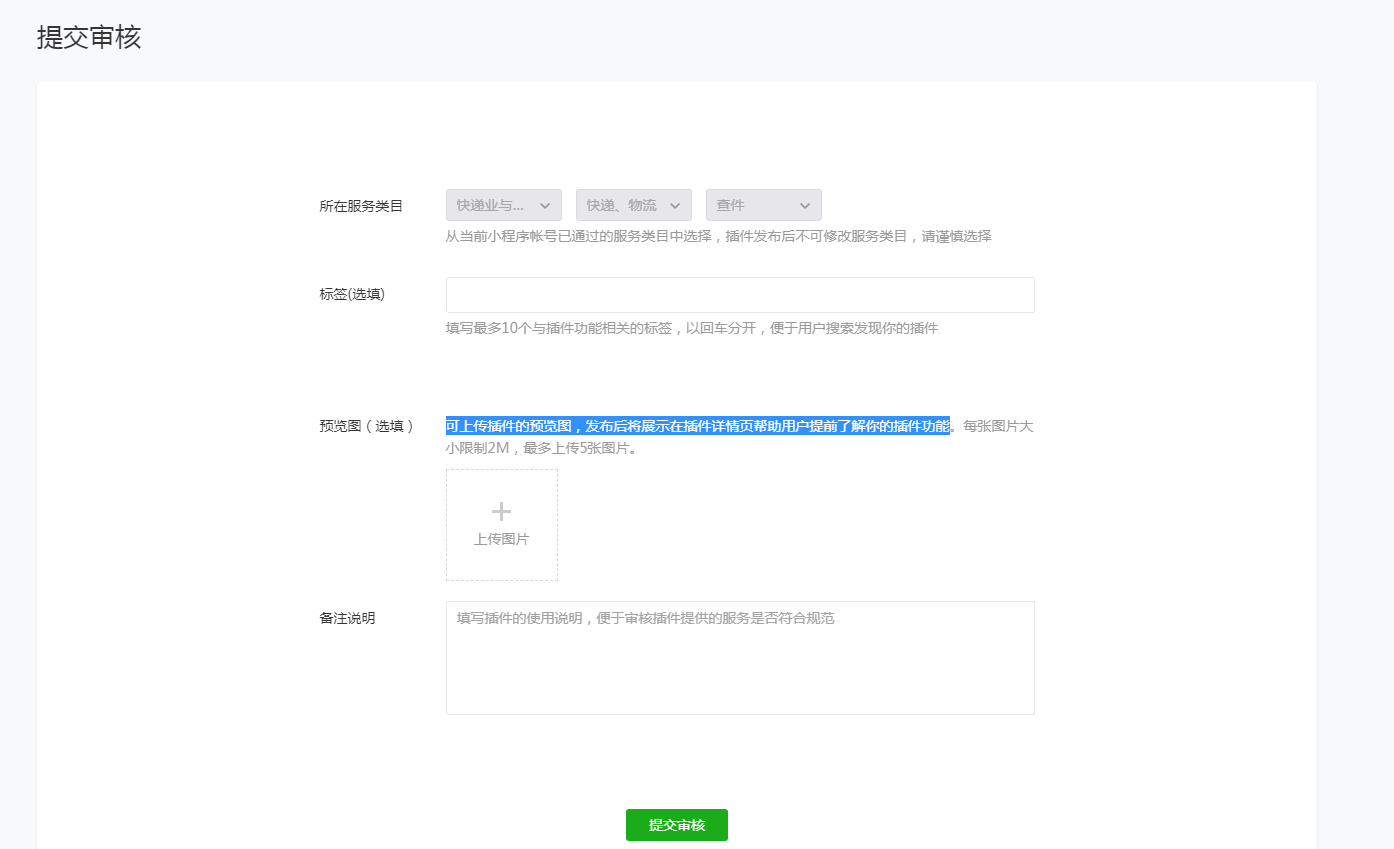
Plug-in service category: One of existing approved Mini Program service categories can be selected for the plug-in. For the available categories, see Applicable Scope and Service Categories.
Tags: Enter tags associated with the service provided by the plug-in.
Preview: To help users understand features of the plug-in in advance, you can upload a preview of the plug-in, so that it can be displayed on the plug-in details page after release.
Feature description: To help the review team to experience and review the features of the plug-in, developers should enter brief introduction and usages of the plug-in.
# Managing applications
Plug-in developers can process plug-in access applications in the Mini Program admin console by choosing Mini Program Plug-In > Application Management and selecting Approve or Reject within 24 hours.
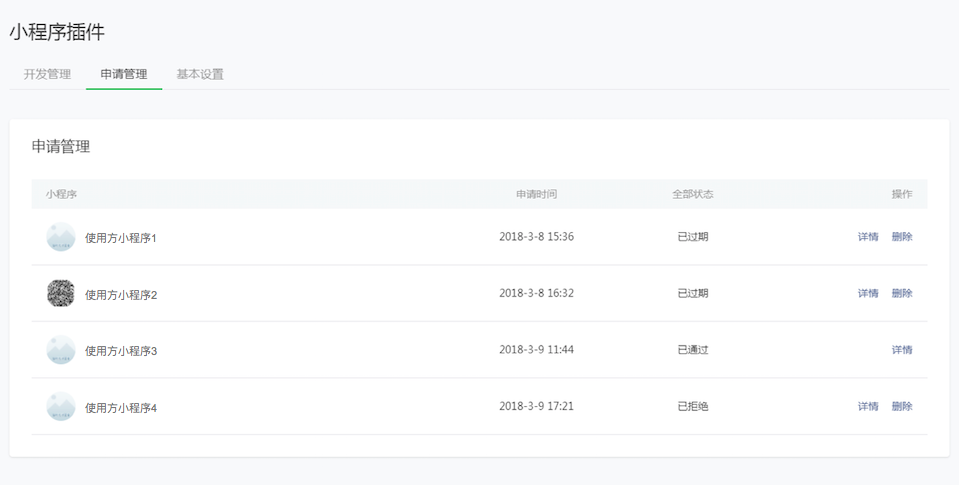
# Introduction to the Plug-In Payment Feature
The payment capability is available within plug-ins to help plug-in developers provide closed-loop services.
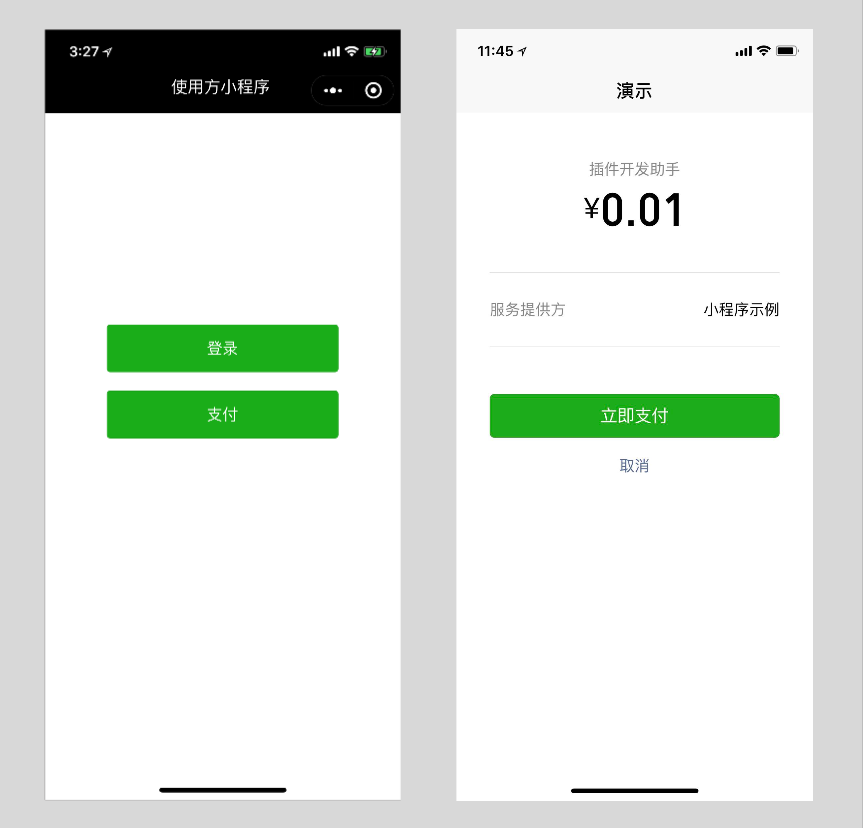
The access process is as follows:
(1) Activate the WeChat Pay capability for the Mini Program where a plug-in is located. For more information, see the Guide to Activating WeChat Pay for a Mini Program.
(2) Select an appropriate payment model based on application scenarios by referring to the following table.
| Payment Model | Applicable Scope | Application Scenario | Access Process |
|---|---|---|---|
| Service provider | Plug-ins that provide services such as commodity sales and fee collection on behalf of contracted merchants. In other word, commodities are not provided by plug-in developers. | The e-commerce platform provides shelves, shopping carts, and other services for contracted merchants, and the catering platform provides ordering and payment services for offline contracted merchants. | 1. Apply to become a WeChat Pay service provider. See Feature Description of the WeChat Pay Service Provider and Access Guide to the WeChat Pay Service Provider. 2. Create a sub-merchant account for a merchant. 3. Link the sub-merchant account to the account of the Mini Program where a plug-in is located. For more information, see the Development Documentation. 4. Initiate payment by using the sub-merchant account in the Mini Program. |
| Common merchant | Plug-in developers produce and sell paid services and commodities in plug-ins. | On the plug-in-based payment application page, you must offer information about existing online services (including but not limited to the Official Account, website, app, and Mini Program) and production and sales certificates for self-operated products, such as purchase invoices. |
(3) In the plug-in adimin console, submit an application for the plug-in payment capability. After the application is approved, the WeChat Pay capability can be used within plug-ins.
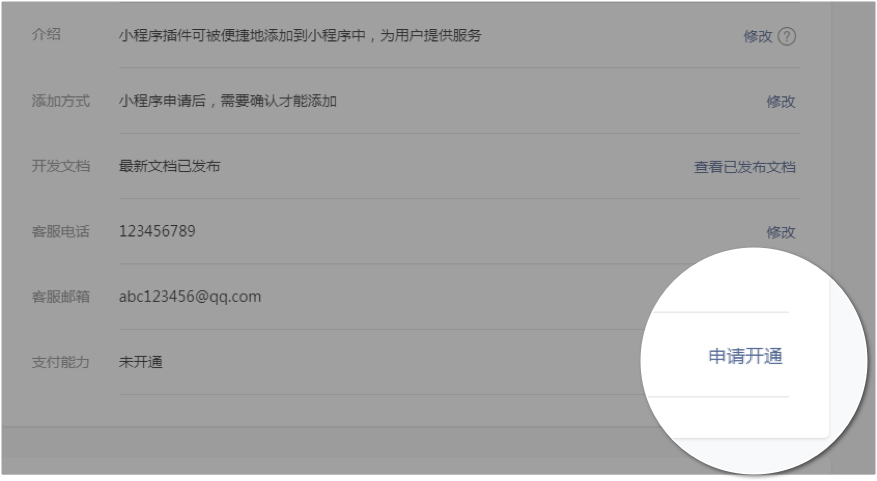
# Using a Plug-In
Mini Program developers can conveniently add plug-ins to their Mini Programs to enrich Mini Program services. When using the Mini Programs, users can use the services provided by the plug-ins within the Mini Programs.
# Applicable scope
All Mini Programs
# Access process
Add a plug-in via the Mini Program admin console
In the Mini Program admin console, a Mini Program developer can choose Settings > Third-Party Service > Plug-In Management to search for a desired plug-in and apply for permissions to use it. The Mini Program developer can use this plug-in within the Mini Program if the plug-in's developer approves the application within 24 hours.
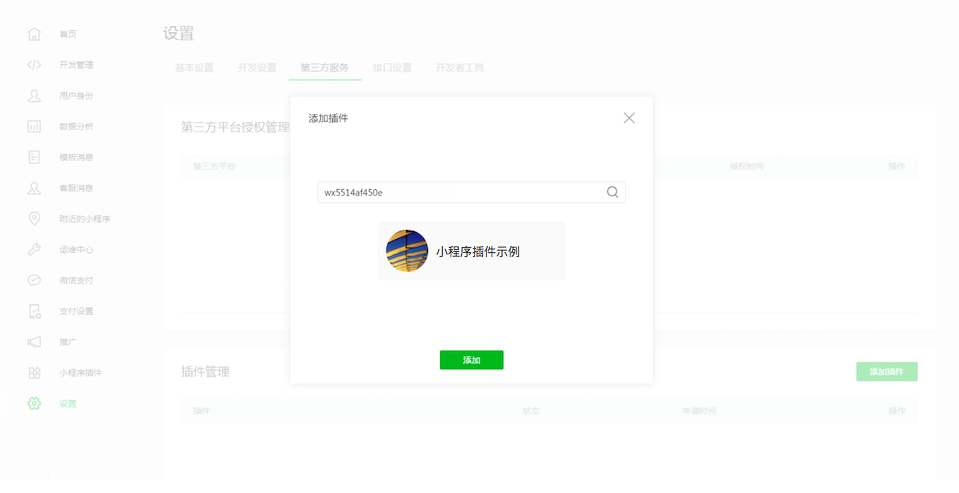
Use a plug-in in Mini Program code
For more information, see Plug-In Development Documentation.